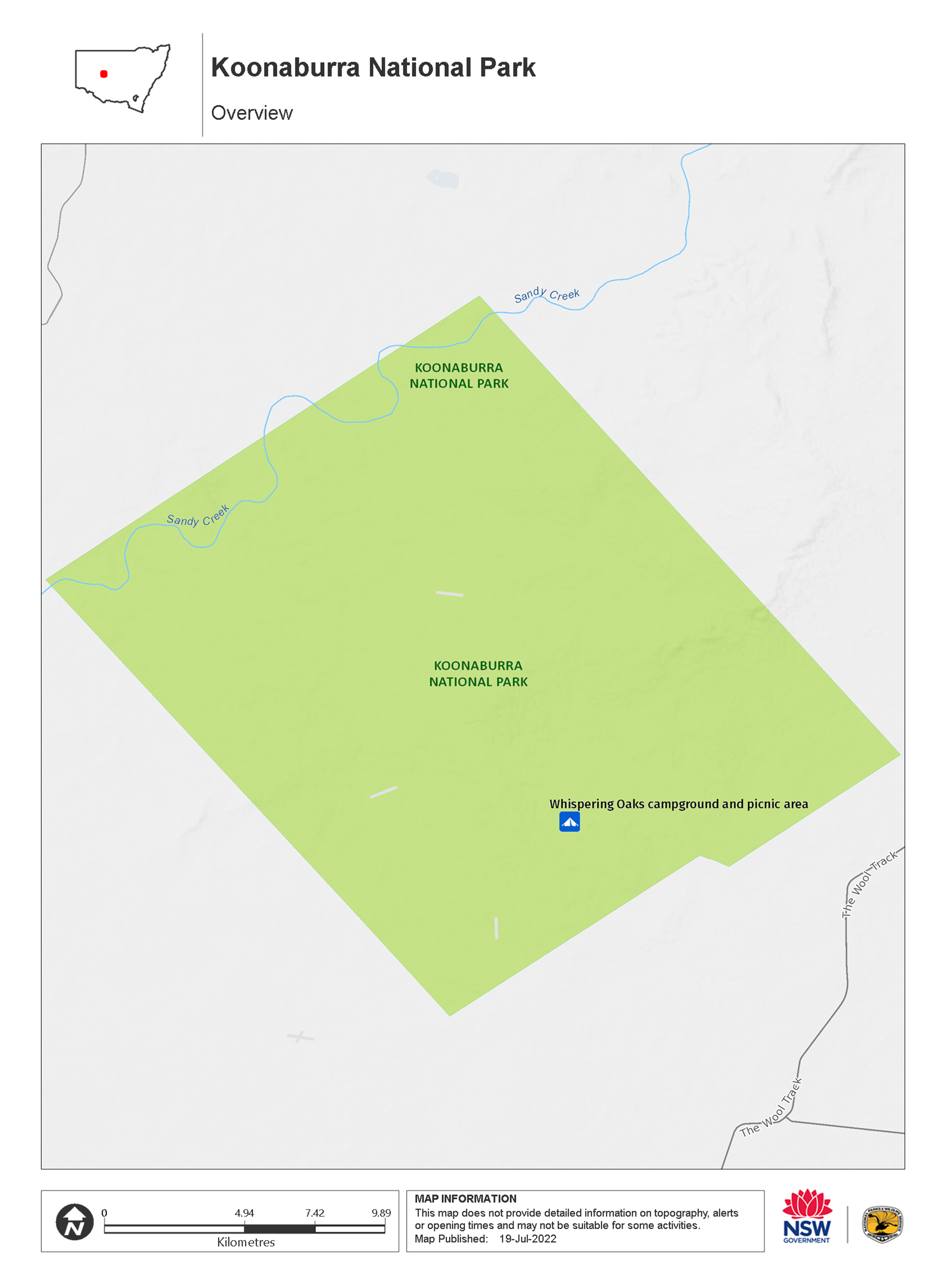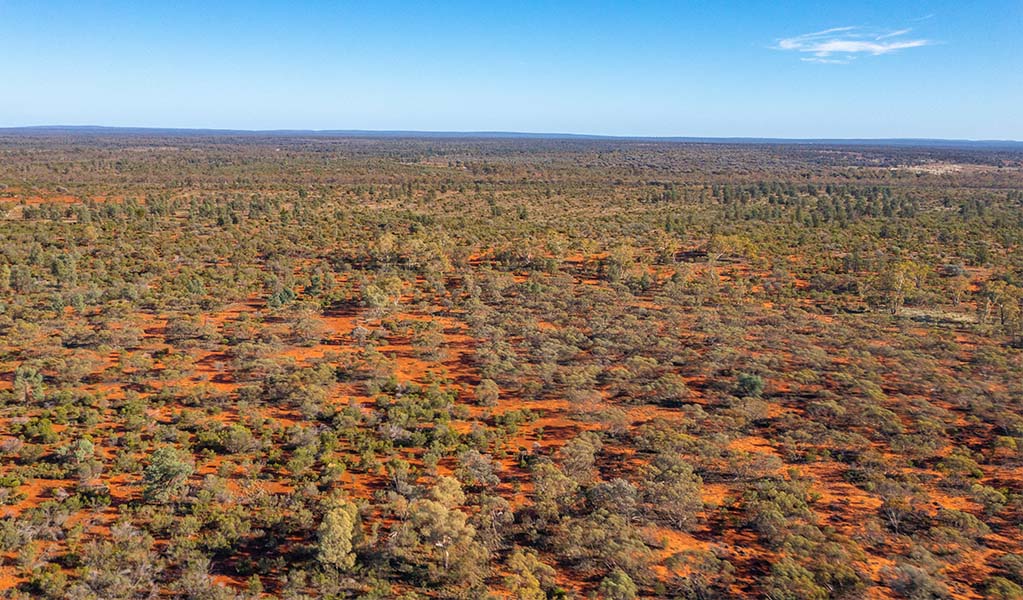Koonaburra National Park
Overview
Immerse yourself in the outback at Koonaburra National Park, about 2 hours from Cobar. Reconnect with nature, take in the open country, and experience the remote isolation that makes western NSW special.
Read more about Koonaburra National Park
With its rippling sand dunes, big skies and open country, Koonaburra National Park lets you step back and enjoy the special sense of peace and wonder you can only find in the outback.
As you explore, keep your eyes open for the local wildlife. The park is home to plenty of emus, red kangaroos and eastern grey kangaroos, and wedge-tailed eagles are regular visitors. You’ll also find a wide variety of vegetation which changes abruptly as you travel across the park, ranging from grasslands to eucalypt forests and cypress pines.
To really indulge in your outback experience, spend a couple of days in the park. Watch the birds, take in the amazing landscapes, and set up camp beneath the open sky. The minimal light pollution makes star gazing a treat, and winter nights are great for cosy evenings around the campfire.
Local alerts
For the latest updates on fires, closures and other alerts in this area, see https://www.nationalparks.nsw.gov.au/visit-a-park/parks/koonaburra-national-park/local-alerts
Contact
- in the Outback NSW region
Koonaburra National Park is always open but may have to close at times due to poor weather or fire danger.
-
-
Dubbo office
02 6841 7100
Contact hours: Monday to Friday, 8.30am to 4.30pm. - 74 River Street, Dubbo, NSW 2830
-
Email: npws.centralwest@environment.nsw.gov.au
-
Dubbo office
-
-
Bathurst office
02 6332 7640
02 6332 7680 To contact the KARST Conservation Unit in this office.
Contact hours: Monday to Friday, 8.30am to 4.30pm. - Level 2, 203-209 Russell Street, Bathurst NSW 2795
-
Email: npws.centralwest@environment.nsw.gov.au
-
Bathurst office
Visitor info
All the practical information you need to know about Koonaburra National Park.
Map

Map legend

Maps and downloads
Nearby towns
Cobar (143 km)
Cobar is a flourishing town built around the thriving mining and pastoral industries. Mining commenced here in the 1870s, and today, the town is an important source of copper, lead, silver, zinc and gold. Find out about Cobar's rich past at the Great Cobar Heritage Centre.
Wilcannia (276 km)
The small historic town of Wilcannia is located on the famous Darling River in the NSW outback. The nearby remote Mutawintji National Park offers a uniquely Australian experience, with its historic Aboriginal sites and captivating rugged desert terrain.
Learn more
Koonaburra National Park is a special place. Here are just some of the reasons why:
Plants and animals protected in this park
Animals
-

Emu (Dromaius novaehollandiae)
The largest of Australian birds, the emu stands up to 2m high and is the second largest bird in the world, after the ostrich. Emus live in pairs or family groups. The male emu incubates and rears the young, which will stay with the adult emus for up to 2 years.
-

Red kangaroo (Macropus rufus)
The red kangaroo is one of the most iconic Australian animals and the largest marsupial in the world. Large males have reddish fur and can reach a height of 2m, while females are considerably smaller and have blue-grey fur. Red kangaroos are herbivores and mainly eat grass.
-

Wedge-tailed eagle (Aquila audax)
With a wingspan of up to 2.5m, the wedge-tailed eagle is Australia’s largest bird of prey. These Australian animals are found in woodlands across NSW, and have the ability to soar to heights of over 2km. If you’re bird watching, look out for the distinctive diamond-shaped tail of the eagle.
Plants
-

Mulga (Acacia aneura)
Mulga are hardy Australian native plants found throughout inland Australia. With an unusually long tap root, the mulga is able to withstand long periods of drought.
Environments in this park
What we're doing
Koonaburra National Park has management strategies in place to protect and conserve the values of this park. View the detailed park and fire management documents.

